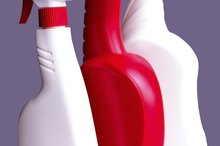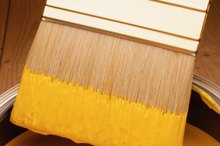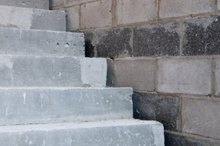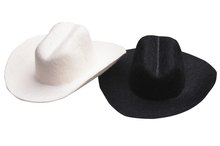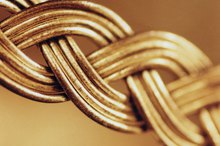The Effects of Breathing Drywall Dust
No two ways about it -- drywall sanding is dusty business, especially during large-scale construction and remodeling projects, when drywall finishing crews are hurrying to sand down taped joints. The dust, which is actually coming from the dried joint compound and not the drywall itself, contains a variety of industrial minerals, including talc, gypsum and silica, which can trigger health problems if inhaled.
Inhalation Symptoms
Tiny filaments in your nose and bronchial tubes trap some dust particles, but they can’t block all the particulates in clouds of drywall sanding dust. Inhaling any amount of dust isn’t healthy, but the more you inhale, the more likely you are to experience physical symptoms. Symptoms worsen with repeated exposure, if you smoke or if you have other respiratory disorders and include:
Short-term Symptoms
Fiberglass Breathing Danger Effects
Learn More
- coughing
- sore throat
- or irritated, watery eyes
Repeated Exposure Symptoms or Conditions
- chronic cough, with or without phlegm
- asthma-like symptoms
- silicosis
- lung cancer -- if silica is present
Respiratory Protection
Side Effects of Inhaling Bleach
Learn More
Specialized sanding equipment and some sanding methods can reduce the amount of dust in the air, but anytime you dry sand, wear a dust mask. Cheap masks might not adequately filter out dust particles. Look for masks bearing the “N95” label, meaning the National Institute for Occupational Safety and Health, a division of the Centers for Disease Control and Prevention, certifies that the mask will block 95 percent of airborne particulates when used as directed. You’ll get even more protection from a full- or half-face silicone respiratory mask that comes with replaceable filters.
- Specialized sanding equipment and some sanding methods can reduce the amount of dust in the air, but anytime you dry sand, wear a dust mask.
- You’ll get even more protection from a full- or half-face silicone respiratory mask that comes with replaceable filters.
Drywall Sanding Equipment
Hand sanding with a sanding block creates billowing clouds of dust, and if you choose that method, in addition to wearing a mask, put a box fan in an open window to suck out some of the dust. Using alternate sanding equipment can also reduce dust.
- Vacuum-type drywall sanders, sometimes called “ventilation sanders,” can reduce the exposure risk of airborne dust by 80 to 97 percent, depending on the individual system.
Switching from hand sanding to pole sanding can also reduce the concentration of inhalable dust particles. It doesn’t create less dust, but the dust is farther away from your face.
- Hand sanding with a sanding block creates billowing clouds of dust, and if you choose that method, in addition to wearing a mask, put a box fan in an open window to suck out some of the dust.
Switching from hand sanding to pole sanding can also reduce the concentration of inhalable dust particles.
Wet Sanding
One of the best ways to reduce airborne drywall sanding dust is to wet sand 1. By using the coarse side of a damp drywall sponge, you can sand off joint compound ridges without filling the room with dust. It’s a slower process than dry sanding, but much of the dust sticks to the sponge, which requires frequent rinsing. The dust that doesn’t stick to the sponge is slightly damp and falls to the floor.
- One of the best ways to reduce airborne drywall sanding dust is to wet sand.
- By using the coarse side of a damp drywall sponge, you can sand off joint compound ridges without filling the room with dust.
Related Articles
References
- NIOSH: Control of Drywall Sanding Dust Exposures
- Nelson HS. Immunotherapy for house-dust mite allergy. Allergy Asthma Proc. 2018;39(4):264-272. doi:10.2500/aap.2018.39.4145
- Kim JY, Rhee CS, Cho SH, Choe G, Kim DY, Han DH. House dust mite sublingual immunotherapy in children versus adults with allergic rhinitis. Published online ahead of print, 2020 Jun 13. Am J Rhinol Allergy. 2020;1945892420931713. doi:10.1177/1945892420931713
- Asthma and Allergy Foundation of America. Dust mite allergy. Updated October 2015.
- Babe KS Jr, Arlian LG, Confer PD, Kim R. House dust mite (Dermatophagoides farinae and Dermatophagoides pteronyssinus) prevalence in the rooms and hallways of a tertiary care hospital. J Allergy Clin Immunol. 1995;95(4):801-805. doi:10.1016/s0091-6749(95)70121-4
- Illinois Department of Public Health. Mites affecting humans.
- Lee E, Lee SY, Park MJ, Hong SJ. TNF-α (rs1800629) polymorphism modifies the effect of sensitization to house dust mite on asthma and bronchial hyperresponsiveness in children. Published online ahead of print, 2020 May 20. Exp Mol Pathol. 2020;115:104467. doi:10.1016/j.yexmp.2020.104467
- Boberg E, Johansson K, Malmhäll C, Weidner J, Rådinger M. House Dust Mite Induces Bone Marrow IL-33-Responsive ILC2s and TH Cells. Int J Mol Sci. 2020;21(11):E3751. Published 2020 May 26. doi:10.3390/ijms21113751
- Weitzel T, Makepeace BL, Elliott I, Chaisiri K, Richards AL, Newton PN. Marginalized mites: Neglected vectors of neglected diseases. PLoS Negl Trop Dis. 2020 Jul 23;14(7):e0008297. doi: 10.1371/journal.pntd.0008297. PMID: 32701946; PMCID: PMC7377360.
- Atta AH, Amer RM, Mesbah AE, Khater MW. Sublingual Versus Subcutaneous Immunotherapy as regards Efficacy and Safety in Respiratory Allergic Patients. Egypt J Immunol. 2019;26(2):65-78.
- American Lung Association. Dust mites. Updated July 1, 2019.
Writer Bio
Glenda Taylor is a contractor and a full-time writer specializing in construction writing. She also enjoys writing business and finance, food and drink and pet-related articles. Her education includes marketing and a bachelor's degree in journalism from the University of Kansas.

